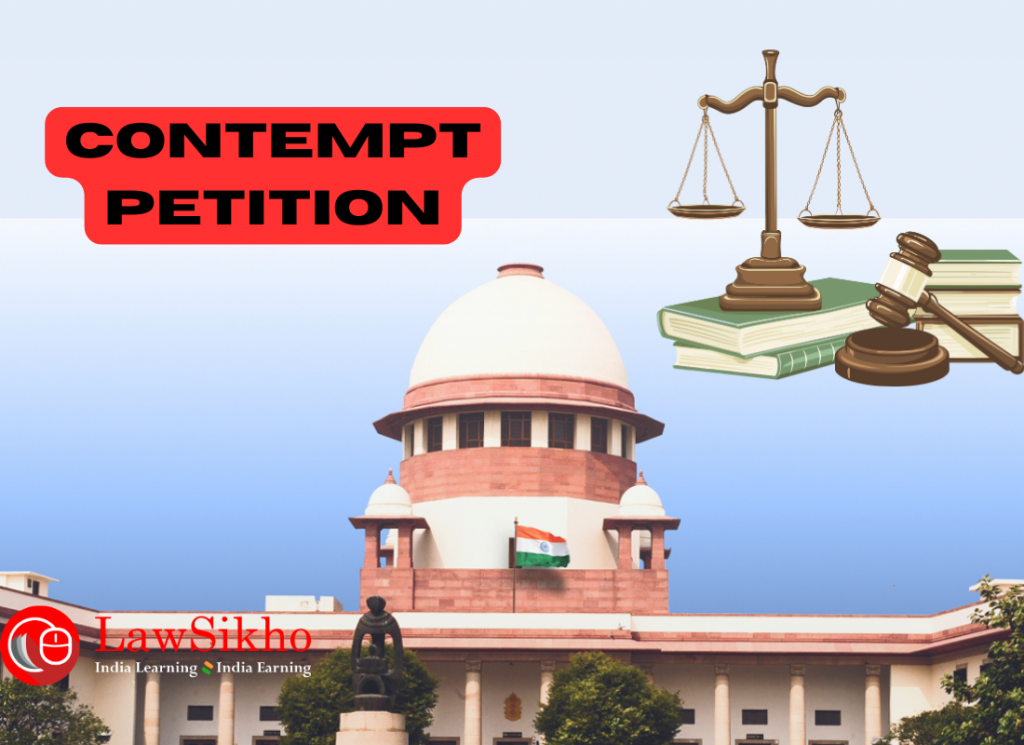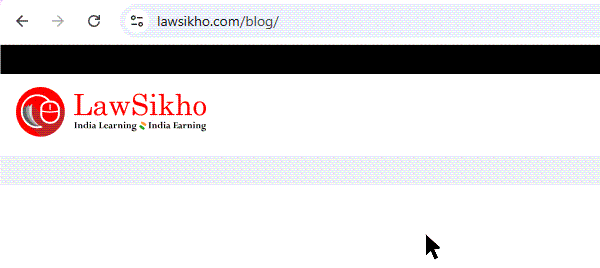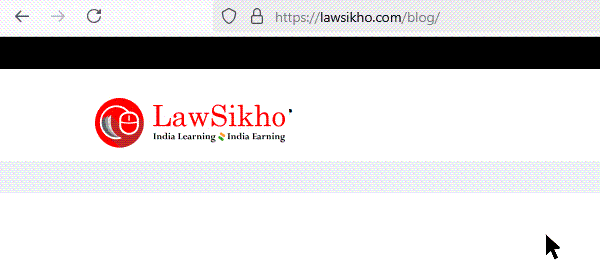This article will give readers a comprehensive understanding of the practical and important concepts of drafting a contempt petition before the Supreme Court. So, whether you are an advocate thinking of expanding your practice in the Supreme Court or whether you are preparing for the Advocate on Record Examination, this article is for you.
Table of Contents
Introduction
I was in my office when a dear friend called and asked me to meet him urgently during the lunch break. He is not someone who would joke about urgencies, so I rushed and reached the Bombay High Court.
He had a million-dollar smile pasted on his face when he saw me approach.
“So, what is it then?” I asked.
“It’s happening, I finally got my own case before the Supreme Court!”
“What, but how?!” I asked, genuinely curious. “Aren’t only Supreme Court Advocates on Record allowed to file cases in their own names?”
“Hah, in due time, that will happen too. But for now, I’m filing and assisting an AOR. He has agreed to let me draft and argue it under his guidance”, he explained.
This was huge for him. He always wanted to argue in the Supreme Court as long as I had known him. He was ambitious and a good advocate.
But I was also worried.
Because the Supreme Court is a different ball game altogether, and one needs to know the ins and outs of the drafting styles, procedural formalities, and practice directions to start a practice there.
I wished him all the best and hoped that he had figured it out. He assured me that he would try his level best, and he returned to his office to prepare for the matter.
After a few days, I got a call from him and he asked me to meet him. I could sense something was wrong.
So I decided to meet him to find out what had happened.
When I saw him, he looked sad, and he told me what had happened.
When he presented his petition to the AOR, the AOR looked at the petition and asked him where he had mentioned the wilful default in the petition. He panicked and was taken aback as he missed mentioning it.
The AOR took the task to himself and said my friend wasn’t ready to represent the client by himself. He was quite shaken, but then he decided to work with the AOR and learn where he had gone wrong. They filed the case and got a favourable order.
The moral of the story is – before you decide to take a case in the Supreme Court, you need to be thorough with the concepts and what are mandatory elements of the petition you are filing.
I intend to make it easier for you, one step at a time.
So, in this article, I will teach you how to effectively draft a contempt petition so that you can also prevent these untoward experiences from happening to you.
But before I start, let me share an open secret: contempt is an important topic from the perspective of the AOR Exam, so if you are someone who is going to appear or you are aspiring to appear in the future, then pay attention.
Are you all excited to learn more? So, let us proceed.
What is contempt of court?
Does anyone reading this know what contempt means?
Put in simple terms, contempt of court means when a party does not obey an order of the court or shows no respect towards the court or the judge. Such disrespectful conduct of a party is referred to as contempt of court. It could also mean any actions that refuse, disrespect, or disrupt the power and authority of the court and its order.
Do you know what the purpose of contempt laws is? Let me tell you that contempt laws are necessary to maintain the faith and confidence of the public in the Indian judiciary and also to prevent any actions that undermine the judiciary’s authority.
Now you know what contempt means? You should also know the types of contempt. So, basically, there are two types of contempt. Let us understand these in detail.
What are the types of contempt?
There are two types: civil contempt and criminal contempt.
Civil contempt
So, section 2(b) of the Contempt of Courts Act, 1971, defines civil contempt. Let me tell you what actions would result in civil contempt:
- When there is a wilful disobedience of any judgement, decree, direction, order, writ or other process of a court or;
- When there is a wilful breach of an undertaking given to a court.
So, any party who ignores the order of the court or acts in violation of the order of the court, then such an act amounts to disobedience in a wilful manner.
It is the court’s discretion to decide whether or not the act or disobedience was wilful or not. The Court shall take into account the facts and circumstances of the case.
Let us understand what can be categorized as wilful and non-wilful disobedience with the help of examples.
If the court orders a company to stop selling a product that infringes a trademark but the company, inspite of there being an order of the court, continues to sell the product, ignoring the order such an action on the part of the company would amount to wilful disobedience as the violation is intentional and deliberate.
Did you follow? Now, let us look at another example.
On the other hand, if the court has directed a government department to pay salaries to its employees, however, some of the employees do not receive their salaries as their appointments were under scrutiny and in doubt. In this case, it does not amount to a wilful breach as the authorities had a valid reason for non-payment of salaries and did not intentionally disobey the court’s order.
Is it clear now?
Moving further.
Criminal contempt
Section 2(c) of the Contempt of Courts Act, 1971 defines criminal contempt. Let us see the acts that would constitute criminal contempt of the court:
- It shall amount to criminal contempt if any publication (whether by words, spoken or written, or by signs, or by visible representations, or otherwise) of any matter;
or doing any other act which
i) scandalises or intends to scandalise, or lowers or intends to lower the authority of any court; or
ii) if it prejudices or interferes or intends to interfere with the due course of any judicial proceeding;
- Or if it interferes with or tends to interfere with or obstructs or intends to obstruct the administration of justice in any other manner.
To understand this better, I will explain the provision with some examples:
- Scandalising the court
Example: if a politician publicly makes a statement claiming that all Supreme Court judges are corrupt and deliver judgments based on bribes without any supporting proof. Then, such a statement scandalizes the court, it lowers public trust and confidence in the judiciary, and it amounts to criminal contempt.
- Prejudicing or interfering with judicial proceedings
Example: if a newspaper publishes an article suggesting that a murder trial accused is “definitely guilty” even before the court has given its verdict. Then, this shall prejudice the trial and may influence the judge or the jury, interfering with the due course of justice and amounting to criminal contempt.
- Obstructing the administration of justice
Example: A witness in a high-profile case is threatened by a powerful businessman who warns the witness not to testify against him. Then, such an act obstructs justice by preventing the witness from giving a truthful testimony, which interferes with the court’s ability to deliver justice. This amounts to criminal contempt.
Was it easy to understand with the help of examples?
Next, you should know the provisions that govern the Supreme Court’s power of contempt.
What are the provisions dealing with the powers of the Supreme Court for contempt?
Coming to the provisions dealing with the Supreme Court’s power of contempt. Did you know the provisions dealing with the power of the Supreme Court to issue contempt are prescribed in the Constitution of India? It is also prescribed under the Contempt of Courts Act, 1971, and the Rules that regulate the proceedings for contempt of the Supreme Court.
Let us first understand the constitutional provisions that empower the Supreme Court to deal with contempt.
I. Constitution of India
Did you know that the contempt jurisdiction of the Supreme Court is part of its inherent and plenary jurisdiction? The powers have been provided under Articles 129 and 142 of the Constitution of India
- Article 129
When you are dealing with contempt of court, it is crucial for you to understand the scope of Article 129 of the Constitution. Do you know what Article 129 is? As per Article 129, the Supreme Court is a court of record, and it has been vested with the power to punish a person who has committed contempt of itself.
Although the law of contempt is largely governed by the 1971 Act, it is now settled that the Supreme Court derives its jurisdiction and power from Article 129 of the Constitution.
- Article 142
Under Article 142, the Supreme Court of India, in addition to passing any such order to do complete justice, also has the power to punish for contempt.
You must be wondering why the inherent power is to be invoked under Article 142 when the power to issue contempt has been expressly provided for under Article 129.
Article 129 confers substantive power on the Apex Court to punish for its contempt, and Article 142(2) supplements it by expressly conferring the power of investigation and punishment. The investigation refers to the law of procedure.
The next one is the Contempt of Courts Act,1971.
II. Contempt of Courts Act,1971
We have already understood the definition of civil and criminal contempt.
We will understand different provisions enshrined under the Contempt of Courts Act,1971, later in this article.
The last one is the rules.
III. The Rules to Regulate Proceedings for Contempt of the Supreme Court, 1975
These rules were made in exercising the powers under section 23 of the Contempt of Courts Act,1971, read with Article 145 of the Constitution of India. I will explain the important rules later on in this article.
You might wonder how the court takes cognizance of contempt cases. Let’s find out.
How does the Court take cognizance of contempt cases?
The court shall take cognizance of contempt cases in the following manner:
1. Firstly, when contempt is committed in the presence of the Court
2. Secondly, when contempt is committed outside the Court.
3. Thirdly, the Court shall suo moto take cognizance.
- Contempt in the presence of the court
Contempt is committed in the presence of the Supreme Court when an allegation has been made before the Supreme Court or it shall appear to the court upon its own view that the person is guilty of contempt. Such contempt shall be in its presence or hearing.
Was this easy to follow?
But do you know what the procedure is to be followed? Let me explain to you.
On taking cognizance of contempt, the Court may cause such person to be detained in custody, and, before the rising of the Court, on the same day, or as early as possible thereafter, the Court shall do the following:-
a) cause him to be informed in writing of the contempt with which he is charged;
b) afford him an opportunity to make his defence to the charge;
c) take such evidence as may be necessary or as may be offered by such person;
d) after hearing him, proceed to determine the matter of the charge; and
e) make such an order for the punishment or discharge of such a person as may be just.
Rule 2 of the Rules to Regulate Proceedings for Contempt of the Supreme Court, 1975, states that where contempt is committed in the view or presence or hearing of the Court, the contemnor may be punished by the Court before which the contempt is committed either immediately or on such date as may be appointed by the Court.
It is also provided in Rule 2 that pending the determination of the charge, the Court may direct that the contemnor be detained in custody. The contemnor may be released on bail on such terms as the Court may direct. This is analogous to section 14 of the Contempt of Courts Act,1971.
The next one is when the contempt has occurred outside the Supreme Court.
- Contempt outside the Supreme Court
Rule 3 of the Rules to Regulate Proceedings for Contempt of the Supreme Court, 1975 provides that in case of contempt other than the contempt referred to in Rule 2 (i.e., contempt in the presence of the Court), the Court may take action:
(a) suo moto, or
(b) on a petition made by the Attorney General or the Solicitor General, or
(c) on a petition made by any person, and in the case of criminal contempt, with the consent in writing of the Attorney General or the Solicitor General.
This is analogous to section 15 of the Contempt of Courts Act,1971.
The last one is suo moto cognizance.
- Suo moto cognizance
You must be wondering what suo moto cognizance/taking cognizance on its own motion means.
Let us first understand the meaning of the expression ‘suo moto cognizance.’ It is a Latin term that means an action taken by a Government agency, Court, or any other Central Authority on its own apprehension.
A suo moto cognizance is taken by a court of a legal matter where the Court receives information about the breach of duty or violation of rights without there being a complaint by any affected party or third party.
The prior consent of the Attorney General of India is not needed to initiate proceedings suo moto, it is the inherent contempt powers of the Supreme Court. The suo moto contempt powers of the Supreme Court are drawn from Article 129 of the Constitution.
It is pertinent to note that the Contempt of Courts Act,1971, cannot limit this power of the Court. The Act only provides the procedure and manner in which the contempt proceeding is to be initiated.
But within how much time can the court initiate contempt proceedings? In short, what is the limitation period to file a contempt petition?
Let us find out.
What is the period of limitation for filing a contempt petition?
Section 20 of the Act states that no court can initiate contempt after the expiry of a period of one year from the date on which the contempt is alleged to have been committed.
Therefore, one must file the contempt petition within one year from the date on which the contempt is alleged to have been committed.
Before we learn how to draft, you must know the punishment for contempt.
What is the punishment for contempt?
Section 12 of the Contempt of Courts Act prescribes the punishment that can be imposed when a person is found guilty of contempt.
The Supreme Court has the power to punish the contemnor and can award simple imprisonment for six months, or with a fine up to Rs. 2000, or with both.
Suppose the Court is of the opinion that a fine will not meet the ends of justice and that a sentence of imprisonment is necessary. In that case, it shall, instead of sentencing the contemnor to simple imprisonment, direct that the contemnor be detained in a civil prison for such period not exceeding six months as it may think fit.
In case a company is deemed to be guilty of contempt, every person who, at the time the contempt was committed, was in charge of and was responsible to the company for the conduct of the business of the company will be deemed to be guilty of contempt along with the company itself.
Every such person may be detained in civil prison for such contempt as a punishment. However, if such a person proves that the contempt was committed without his knowledge or that he exercised all due diligence to prevent its commission, he shall not be held guilty.
Let’s start drafting the Contempt Petition.
Are you ready?
How to draft a contempt petition in the Supreme Court?
Let us take the example below to draft this petition.
“Juhi Mogia, a reputed journalist, works with NewsX, which is India’s leading media house. Sometime in the year 2024, the TRP fell for Juhi’s show, i.e. Sansani News. As advised by the board of directors, Juhi was asked to conduct an e-survey of judges and various courts in India. Many lawyers were invited to anonymously rate judges across the country based on their intellect, working capacity, and also on their ability to decide matters effectively.
These survey reports were then used by Juhi in the show to defame the judges who had received lower scores. So, now you have been approached by Sanju Upadhaya, as a responsible citizen of the country who recently quit NewsX after this episode, to file a criminal contempt petition against NewsX, specifically Juhi Mogia.”
Let’s see how we begin drafting.
Cause title
Your petition shall start with the cause title, and your cause title will contain the following details:
- You need to mention the name of the court, e.g. Supreme Court, High Court etc.;
- Then comes the jurisdiction;
- You need to mention the petition number and year (here let me tell you the number is assigned by the Registry;
- You shall also mention relevant provision under which the contempt petition is being filed;
- Then comes the details of the parties which include their respective names and addresses.
IN THE SUPREME COURT OF INDIA
INHERENT JURISDICTION
CONTEMPT PETITION (CRIMINAL) NO. ______/2025
IN THE MATTER OF:
Sanju Upadhaya
S/o _____________
R/o_____________
……PETITIONER
V.
1. Juhi Mongia
D/o ______________
R/o________________
… RESPONDENT/
ALLEGED CONTEMNOR NO.1
2. NewsX
Registered office at ____
Represented by________ … RESPONDENT/ALLEGED CONTEMNOR NO.2
The same is followed by a one-liner description of the nature of the case being presented, the act and rule under which it is being filed, and by and against whom it is being filed.
CONTEMPT PETITION ON BEHALF OF THE PETITIONER U/S 12 OF THE CONTEMPT OF COURTS ACT, 1971 READ WITH RULE 3 (C) OF THE RULES TO REGULATE PROCEEDINGS FOR CONTEMPT OF THE SUPREME COURT, 1975 FOR INITIATING CONTEMPT PROCEEDINGS AGAINST THE ABOVENAMED ALLEGED CONTEMNORS FOR BROADCASTING A SURVEY REPORT ON NEWS TO SCANDALIZE AND DEFAME THE JUDGES
TO,
THE HON’BLE CHIEF JUSTICE OF INDIA AND
HIS COMPANION JUDGES OF THE SUPREME COURT OF INDIA
MOST RESPECTFULLY SHOWETH
Introductory Paragraph: You will start by writing why you are filing the petition along with the relevant provisions of law under which you have filed the petition and also give the details of the contempt.
Let’s see how it is supposed to look like in the present case:
- That the present Contempt Petition is being filed by the Petitioner under Section 12 of the Contempt of Courts Act, 1971 praying for initiation of contempt proceedings against the Respondents for their scandalous conduct whereby they broadcasted a survey report on the news channel of the Respondent No.2 led by Respondent No.1 defaming the judges who received low scores in the survey thereby lowering the authority of various courts across the nation.
Since this is an in person contempt, we have learnt that we need to obtain prior consent in writing of the Attorney General or Solicitor General to file the petition. Therefore, you need to mention that you have obtained the consent in writing and attach the same.
- The present Contempt Petition is filed after obtaining the prior written consent dated 12.01.2025 of the Attorney General, which written consent is annexed hereto as “Annexure P-1”.
Details of Parties: You must provide descriptions of parties and their role in the case.
- That the Petitioner is an upstanding citizen of the country and a former employee of the Respondent NewsX, he resigned from his job in protest against the Respondents’ conduct in scandalizing the authority of the judiciary.
- That the Respondent No.1, Juhi Mongia, is one of the leading journalists in the country, and the Respondent No. 2, NewsX, is one of the most popular news houses with a regular viewership of approximately 25 million across India..
Material Facts: Provide chronological facts highlighting the contempt. The statement of facts of the case should detail all the events with dates that have led to the filing of the contempt petition, along with the necessary documentary evidence annexed wherever necessary.
- That the Respondent No.2 has been in the business of news broadcasting and publication since 1998. However, as new and upcoming news channels came up with more interesting content and since, in the first quarter of the year 2024, TRP fell for the Respondent No.1’s show-Sansani News leading to a major revenue loss of the show, the Respondent No.2 decided to take drastic and illegal measures to boost the TRP.
- That, as per the Minutes of Meeting dated 12.05.2024, which was recorded while discussing the said issue, the Board of Directors, more specifically, the authorised representative of Respondent No.2 advised the Respondent No.1 to gather some dirt on the judiciary and come up with a means to gain the attention of the viewers.
It is important to note here that as a Petitioner, you must even mention the steps or objections you took before coming to the Court to prevent this act of contempt.
- That in the said meeting, it was thus decided that the Respondent No.2 would anonymously ask lawyers to give their opinion on the sitting judges of various courts in which they practice. The same would definitely garner attention from the country at large. The Petitioner objected to the said course of action, however, no heed was paid to the same.
- That in furtherance of the said meeting, lawyers were invited through a news publication in NewsX’s weekly paper to rate judges anonymously across the country. However, the link that was provided on the said paper redirected the lawyers to a form which asked the judges to be rated on their intellect, working capacity and ability to decide matters. A true typed copy along with the original of the newspaper publication dated 18.06.2024 and a true copy of the form are annexed hereto as “Annexure P-2” and “Annexure P-3” respectively.
Date of Non-Compliance: Pinpoint the date(s) on which the contempt occurred
- That in view of the forms circulated, approximately 5000 responses were received and the survey reports were used in the show of the Respondent No.1 broadcast on 10.08.2024, whereby Respondent No.1 publicly defamed and used various derogatory terms to criticize the judges and their ability to sit in courts and run the judiciary. The survey report is annexed hereto as “Annexure P-4”.
Nature of Contempt: Once the material facts are laid down, we need to address the Court on the Nature of Contempt
- That the aforesaid act seriously scandalizes the authority of the courts in India and lowers the reputation of the judges. This action has lowered the confidence of the people in the Indian judiciary and has also interfered with the administration of justice.
- That these actions of the Respondents thus amount to the criminal contempt u/s 2(c) of the Contempt of Courts Act, and thus, the Respondents are liable to be punished for contempt of this Hon’ble Court and others.
Mandatory clauses: You have to mention the Court having jurisdiction and also confirm that you have not filed any other case on the same subject matter.
- That this Hon’ble Court has jurisdiction to punish for contempt of itself under Article 129 r/w Article 142 of the Constitution of India, and hence the present petition is being filed before this Hon’ble Court.
- That no other similar petition has been filed on the above facts and circumstances before this Hon’ble Court.
- That the present petition is being filed bona fide and in the interest of justice.
Prayer: You have to pray to allow the petition and seek the initiation of contempt proceedings against the contemnor.
PRAYER
In view of the aforementioned facts and circumstances, it is prayed that this Hon’ble Court may be pleased to:
- Allow contempt petition and initiate action for contempt against the Respondents/Contemnors for broadcasting a survey report on news to scandalize and defame the judges.
- Any other order(s) in the interest of justice, equity and good conscience.
Was this easy? So now you can say that you have mastered the skill to draft a contempt petition on your own. So, if you are asked to draft it, then your answer should be a big yes.
Moving on now.
What should be included in your contempt petition paper book?
The contempt petition paper book should have the following :
- A cover page
- An index
- Office report on limitation
- Proforma for first listing
- Synopsis
- List of dates;
- Contempt Petition
- Affidavit;
- Annexures.
- Filing Memo
- Appendix
- Vakalatnama
You have to prepare seven copies of the paper book and submit to the Registry, unless otherwise ordered by the Court. You might be wondering why seven copies, so here’s your answer: one for the petitioner, one for the opposite party, and the remaining for the use of the Court.
The paper book has to be prepared at the expense of the Central Government.
Conclusion
A contempt petition is a powerful tool to uphold the authority of the judiciary and ensure compliance with court orders. However, as seen in my friend’s experience, drafting one requires precision, clarity, and an understanding of the principles governing contempt. If the next time you are given a task to prepare a contempt petition, then by now you know how to draft it. Learning this skill adds value and will give you an edge over your peers.
FAQS
- Can contempt proceedings be initiated against an advocate?
Contempt proceedings can be initiated against an advocate if the advocate is held liable for violating the order of the court.
- Can contempt proceedings be initiated against judges or magistrates?
Contempt proceedings can be initiated against the judges or magistrates.
In the case of Hon’ble Shri Justice C.S. Karnan [2017(7) SCC 1], the Supreme Court initiated suo moto contempt proceedings against a sitting High Court Judge after he accused twenty judges of the higher judiciary of corruption. He addressed a letter to Prime Minister Modi against this but did not provide any evidence against them. As a result whereof, he was convicted for contempt of court and was sentenced to 6 months imprisonment.
- Can a contemnor make a request to be tried by a different judge?
A person who has been charged with contempt can apply, either orally or in writing, to have the charge against him tried by some judge other than the Judge or judges in whose presence the offence is alleged to have been committed.
If the Court is of the opinion that it is just and practicable to do so, then in the interest of proper administration of justice, it shall place the matter before the Chief Justice, together with a statement of the facts of the case, for necessary directions.
- Is there a court fee for filing a contempt petition before the Supreme Court?
There is no court fee for filing a contempt petition before the Supreme Court.






 Allow notifications
Allow notifications
